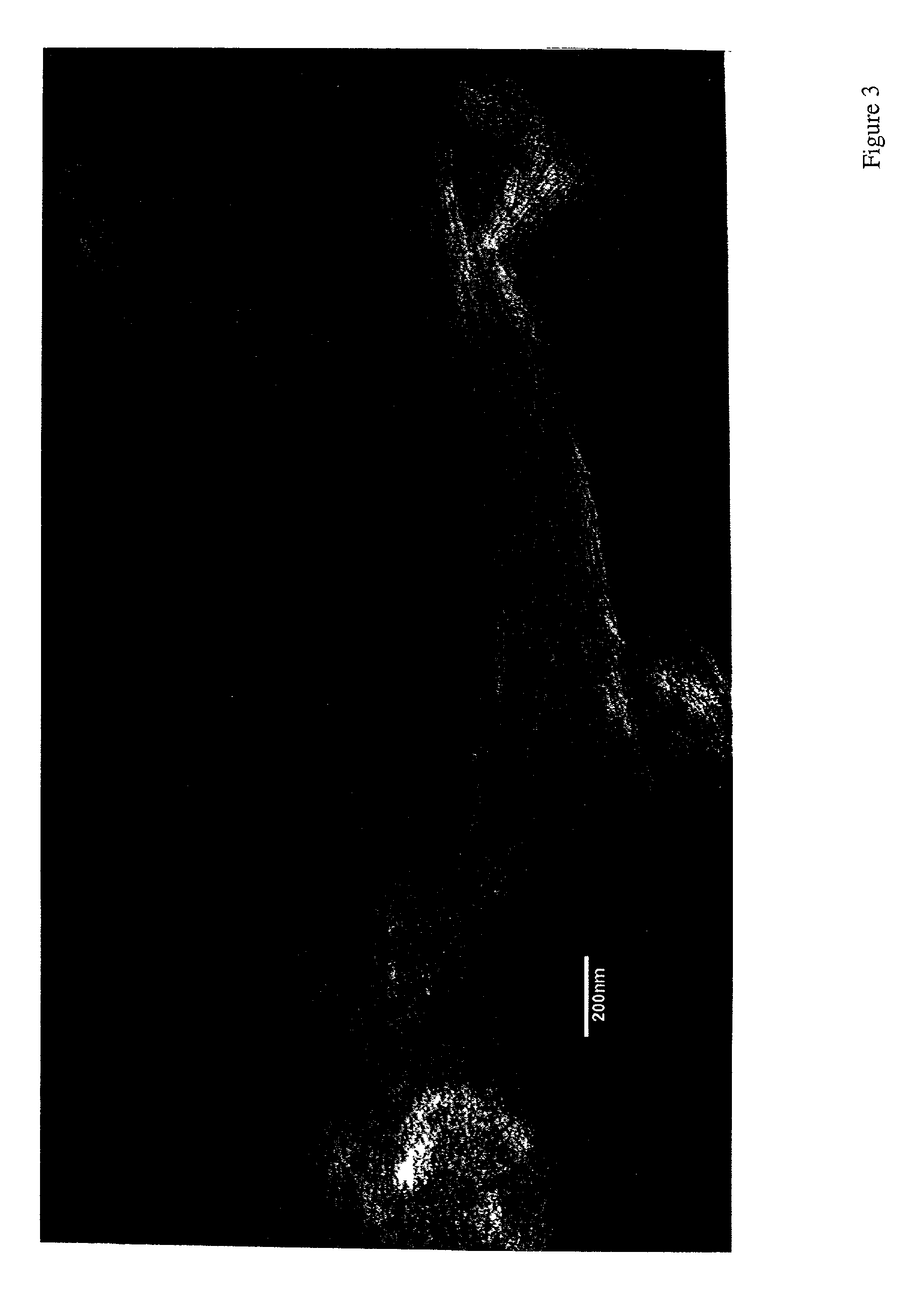Mesostructured transition aluminas
a technology of mesostructure and alumina, which is applied in the field of mesostructured transition alumina, can solve the problems of limited stability, limiting the usefulness of mesostructure in chemical catalysis and adsorption, and amorphous walls of mesostructure, and achieves the effect of economics and relatively easy to perform
- Summary
- Abstract
- Description
- Claims
- Application Information
AI Technical Summary
Benefits of technology
Problems solved by technology
Method used
Image
Examples
first embodiment
[0052] this invention is directed toward the preparation of a mesostructured hydrated alumina phase. In particular, we disclose the preparation of mesostructured forms of boehmite, which are denoted as MSU-S / B aluminas. Evidence for a mesostructured boehmite phase is provided by the presence of at least one x-ray diffraction line in the low angle region corresponding to a lattice spacing of at least 2.0 nm. In addition, the diffraction patterns of the said mesostructured boehmites exhibit wide angle reflections characteristic of a bulk, atomically ordered boehmite phase. This combination of low angle and wide angle x-ray reflections is unique among boehmite phases. The low angle reflection is indicative of a network that is ordered on a mesoscopic length scale (i.e., 2.0-50 nm), whereas the wide angle reflections show that the particles comprising the mesoscopic network contain an atomically ordered boehmite phase.
[0053] The ordered mesoscopic network of an MSU-B boehmite contains p...
examples
[0067] In the Examples provided below, the synthesis and properties of the mesostructured boehmite and gamma-alumina phases of this invention is demonstrated. The as-synthesized MSU-B and MSU-S / B and calcined MSU-.gamma.-compositions were characterized by X-ray diffraction (XRD) using a Rigaku Rotaflex equipped with Cu--K.alpha. radiation; .lambda.=0.1541 nm). The presence of a low angle diffraction peaks corresponding to average pore to pore correlation lengths of at least 2.0 nm was indicative of a hierarchical mesostructure. Wide angle XRD reflections were used to indicate the presence of atomically ordered walls of boehmite or a transition alumina.
[0068] Nitrogen BET surface areas, pore volumes and framework pore sizes were determined using nitrogen adsorption-desorption methods. The sorptometer used to record the adsorption-desorption isotherms was a Micromeritics ASAP 2010 and Tristar instruments. The samples for adsorption measurement were degassed at 150.degree. C. and <10.s...
examples 1-3
[0070] These Examples illustrate the use of the following non-ionic organic modifiers for the preparation of mesostructured surfactant-boehmite composite compositions (denoted MSU-S / B) using aluminum chlorohydrate, [Al.sub.13O.sub.4(OH).sub.24 (H.sub.2O).sub.12]Cl.sub.7 as the aluminum source
PUM
| Property | Measurement | Unit |
|---|---|---|
| lattice spacing | aaaaa | aaaaa |
| lattice spacing | aaaaa | aaaaa |
| temperature | aaaaa | aaaaa |
Abstract
Description
Claims
Application Information
 Login to View More
Login to View More - R&D
- Intellectual Property
- Life Sciences
- Materials
- Tech Scout
- Unparalleled Data Quality
- Higher Quality Content
- 60% Fewer Hallucinations
Browse by: Latest US Patents, China's latest patents, Technical Efficacy Thesaurus, Application Domain, Technology Topic, Popular Technical Reports.
© 2025 PatSnap. All rights reserved.Legal|Privacy policy|Modern Slavery Act Transparency Statement|Sitemap|About US| Contact US: help@patsnap.com



